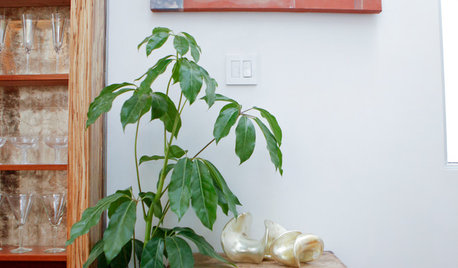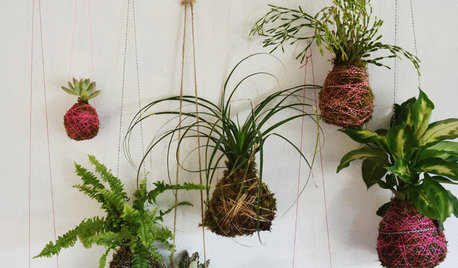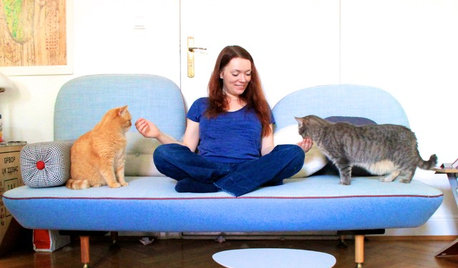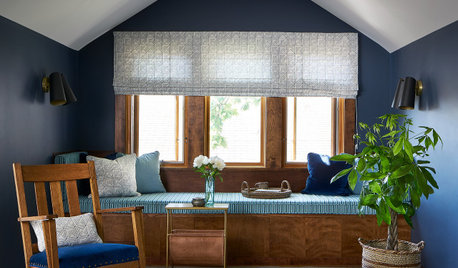schefflera
Polly381
11 years ago
Related Stories

DECORATING GUIDESMeet a Houseplant That Doesn't Mind Neglect
Got better things to do than remember to water your houseplants on schedule? Schefflera will forgive and forget
Full Story
CONTEMPORARY HOMESHouzz Tour: A Home in Sync With Its Surroundings
A contemporary Los Angeles home has big views and seamless transitions between indoors and outdoors
Full Story
HOUSEPLANTS8 Essentials for Healthy Indoor Plants
Houseplants add so much to our homes — and can thrive when grown in the right conditions. Keep these tips in mind
Full Story
HOUSEPLANTS10 Top Plants to Grow Indoors
Brighten a room and clean the air with a houseplant that cascades artfully, stretches toward the ceiling or looks great on a wall
Full Story
GARDENING GUIDESCommon Myths That May Be Hurting Your Garden
Discover the truth about fertilizer, soil, staking and more to keep your plants healthy and happy
Full Story
HOUSEPLANTSDIY Project: How to Make a ‘Kokedama’ String Garden
Dig in to create a simple, beautiful Japanese-inspired hanging garden
Full Story
SHOP HOUZZShop Houzz: How to Style the Coffee Table
Make your coffee table a chic focal point with creative accents
Full Story
CONTAINER GARDENSHappy Houseplants, Happy People
Potted plants add life and beauty to a room. Learn easy ways to keep them healthy
Full Story
PETSWorld of Design: Pampered Pets and Their 10 One-of-a-Kind Homes
Fall in love with these critters and their clever living spaces, from a cat playground in France to a chicken house in the U.S.
Full Story
FEEL-GOOD HOMEHow to Carve Out a Corner Just for You
You may not have an entire room where you can get away for meditation or a catnap, but a retreat is still within reach
Full Story









Polly381Original Author
Polly381Original Author
Related Professionals
Mitchellville Landscape Architects & Landscape Designers · New Mexico Landscape Architects & Landscape Designers · North New Hyde Park Landscape Architects & Landscape Designers · Alamo Landscape Contractors · Lyndhurst Landscape Contractors · Mission Viejo Landscape Contractors · Norristown Landscape Contractors · Peachtree City Landscape Contractors · Rochester Landscape Contractors · Round Lake Landscape Contractors · Santa Maria Landscape Contractors · Vermilion Landscape Contractors · Waipahu Landscape Contractors · Sweetwater Interior Designers & Decorators · Fish Hawk Handymantapla (mid-Michigan, USDA z5b-6a)
Polly381Original Author
greenlarry
tapla (mid-Michigan, USDA z5b-6a)
Polly381Original Author
Polly381Original Author
birdsnblooms
tapla (mid-Michigan, USDA z5b-6a)
tapla (mid-Michigan, USDA z5b-6a)
greenlarry
tapla (mid-Michigan, USDA z5b-6a)
greenlarry
pirate_girl
greenlarry
tapla (mid-Michigan, USDA z5b-6a)
Polly381Original Author
Polly381Original Author
greenlarry
greenlarry
tapla (mid-Michigan, USDA z5b-6a)